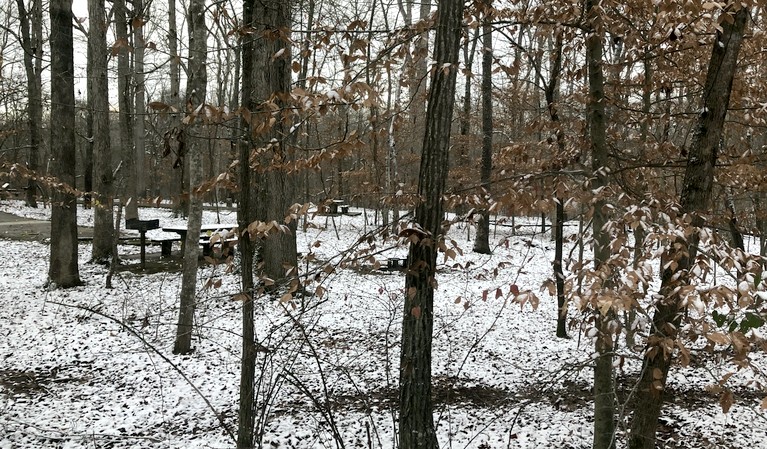
We were greeted with snow on our first morning and temperatures around 25 degrees. The cold weather has stayed with us for our entire stay, dropping at times into the mid teens overnight. The campground hasn’t been busy at all, probably due to the low temperatures but there have been several hearty souls in tents.
The park is located near the confluence of the Big Duck and Little Duck rivers. Upstream of the confluence, the rivers drop off the Cumberland Plateau in a series of ledges. The gorges formed by the rivers left a high peninsula between them. Native Americans built mounds around the peninsula to enclose a ceremonial area of about 50 acres. An entrance is aligned with the sun’s position at summer solstice.
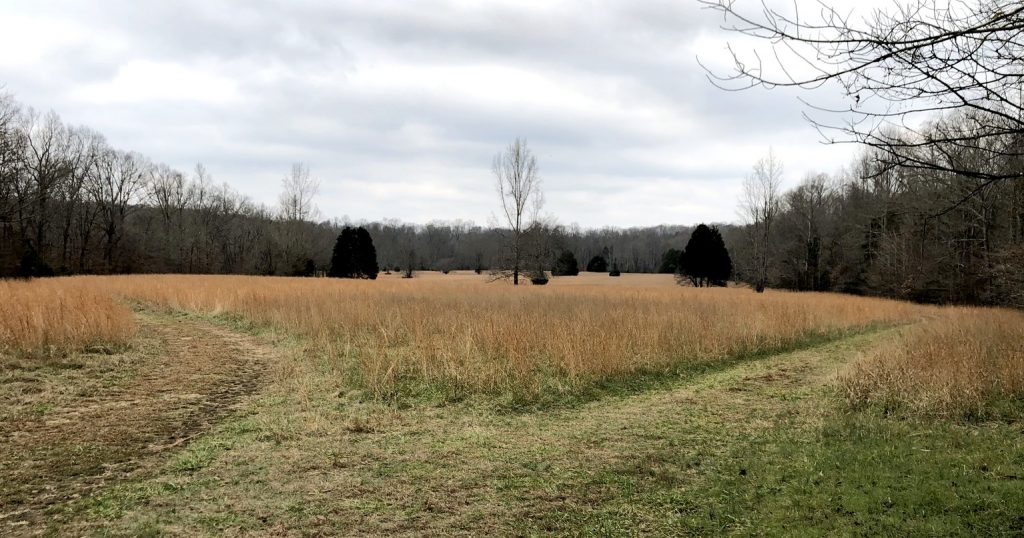
There are numerous trails in the park; the most popular, the Old Stone Fort Enclosure Trail, follows the perimeter of the mounds, providing great views of the falls on both rivers. Also visible are the ruins of several mills used for paper making. The first mill on the property was a powder mill; it was burnt down during the Civil War.
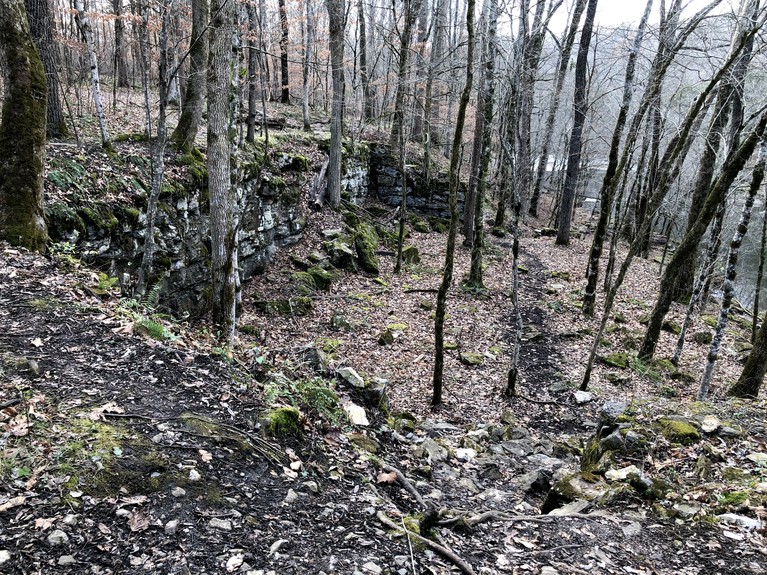
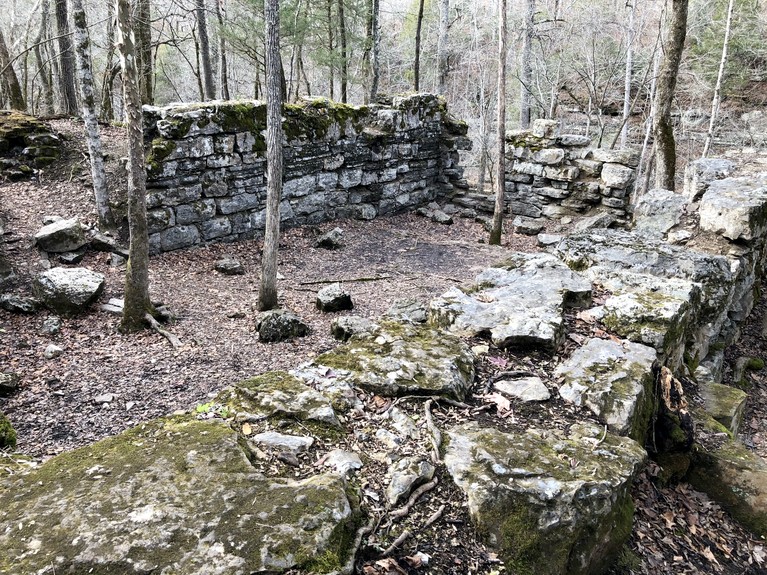
The campground was accessed from the park by a one lane railroad bridge surfaced with wooden planks. Recently the bridge was closed and a new campground entrance was created about 1/2 mile away. Campers can still walk across the bridge to the main park.
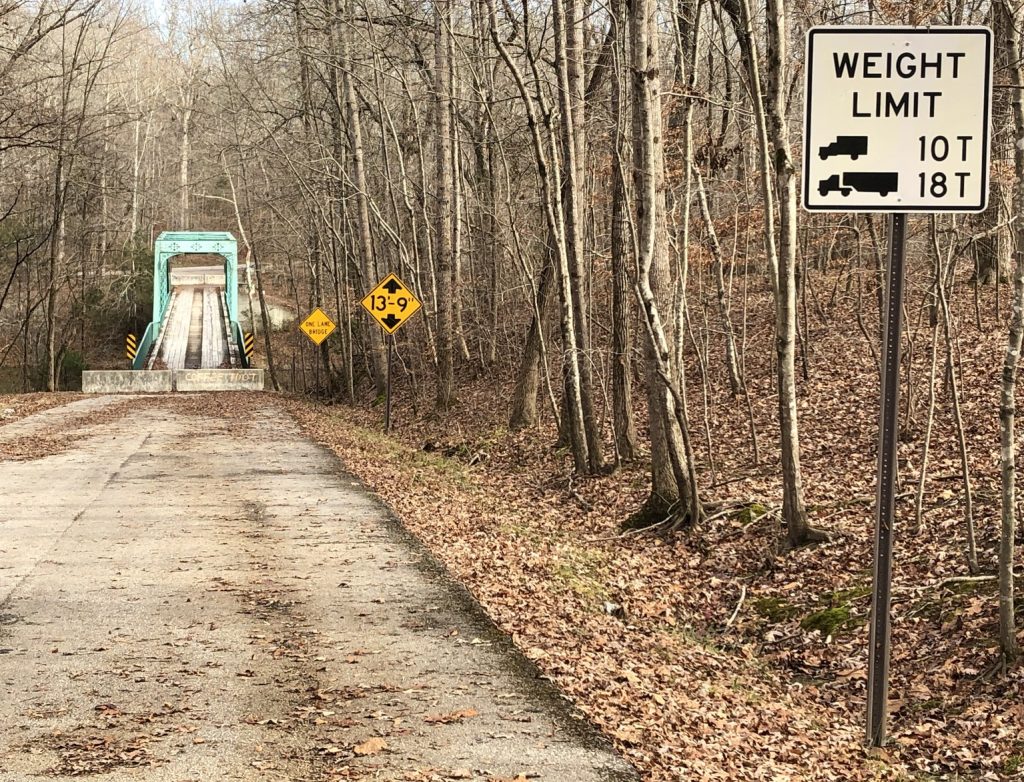
The campground side also has a couple of trails, the Nature Trail and the Garrison Road Trail. The latter coincides with a short section of the original Dixie Highway (US-41) that runs from Miami to the upper peninsula of Michigan.
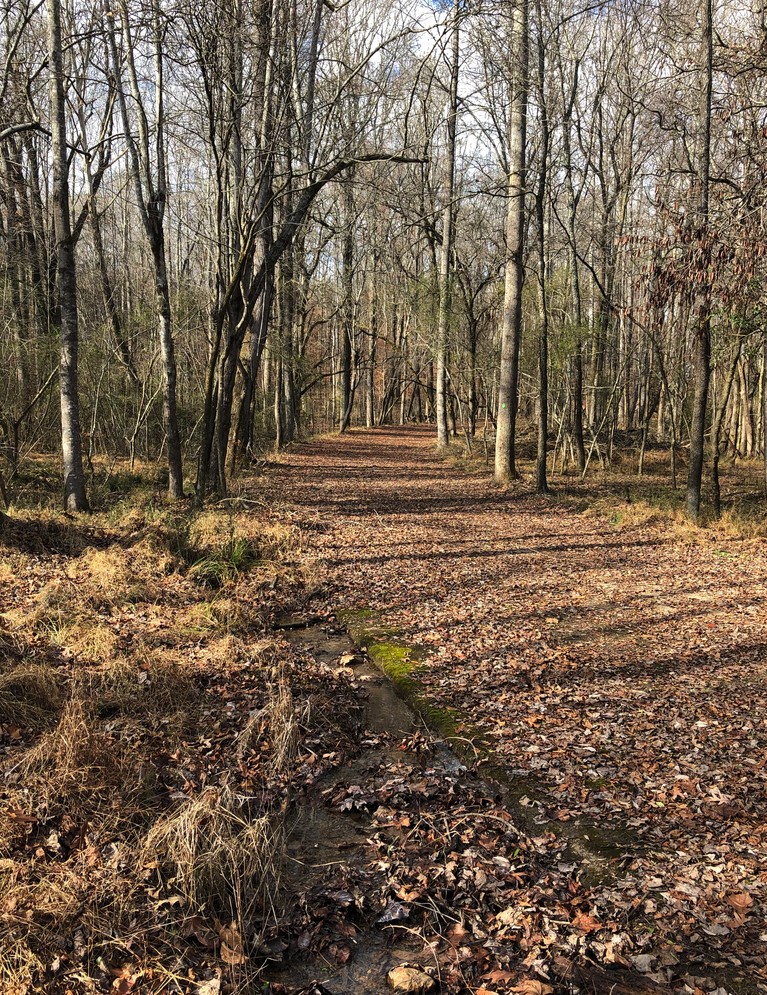
Verizon and AT&T signal was good. OTA TV was nonexistent, and the campground is too heavily treed for satellite use.
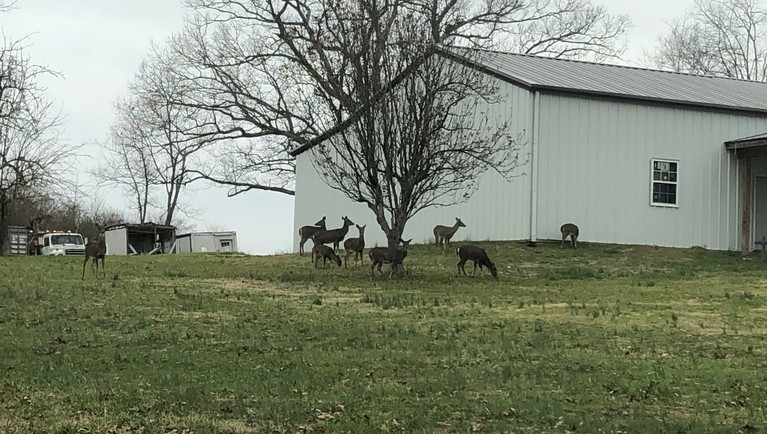
About a mile away is the little town of Manchester, the county seat of Coffee County. We ran into this family twice during our visit. The first time was on the old section of Hwy-41 and the second was in a yard adjoining the park. Eleven strong and they had eaten the front yard plantings to the nub.